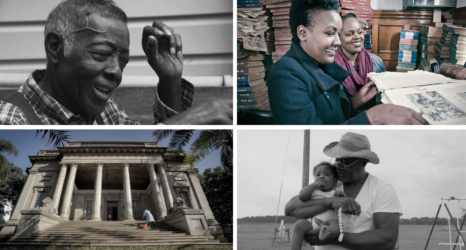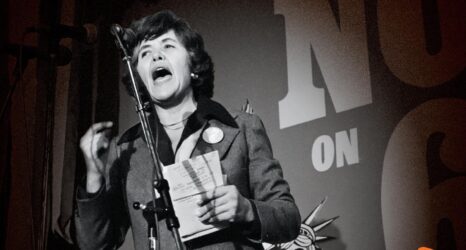The second installment of our “Forgotten Women of Film History” series shines the spotlight on the earliest known Chinese American film director, Marion Wong.
While there are conflicting reports about the exact dates of her birth and death, it is believed that Wong was born in 1895 in the San Francisco Bay Area and lived there until she died in 1969 or 1970. Around 1916, Wong formed the Mandarin Film Company and wrote her debut film, The Curse of the Quon Gwon: When the Far East Mingles with the West, which is considered the first narrative feature made by a Chinese American and one of the first feature films directed by a woman.
But Wong didn’t just write The Curse. She also cast and directed it, designed the scenery and costumes—and starred! The film featured many members of her family, including her sister-in-law and best friend, Violet Wong. In total, The Curse‘s cast boasted 30 Chinese men and women, making it the first film to feature an all-Chinese cast.
Wong told a Bay Area paper that she was inspired only to write a love story initially, but later “decided that people who are interested in my people and my country would like to see some of the customs and manners of China.” So she added “many scenes depicting these things.”
Indeed, Wong, a third-generation Chinese American, weaves together her Chinese heritage with her American upbringing, employing San Francisco Bay district stores and homes decorated in authentic Chinese style as her interiors. A lavish, traditional Chinese wedding ceremony, complete with mainland rituals, proves an interesting set piece in the film, especially given Wong’s own rejection of an arranged marriage in 1911. In fact, Wong employs the time period’s still-emerging technologies of super-imposition and dissolve special effects to convey the protagonist’s anxiety about her impending marriage. At a time when women were bound by traditional gender roles and societal expectations at all corners of the globe, Wong, pulling from her own experiences, deftly juxtaposed two cultures using the most popular and accessible medium available to American audiences.
More on The Curse:
Unfortunately, American audiences would have to wait. The Curse enjoyed only two screenings upon its release. It is believed Wong traveled as far as New York to sell her film, but because it did not feature the tired Chinese character tropes and plot devices mainstream media had promoted and to which American audiences had grown accustomed, The Curse was never picked up. Without distribution or exhibition of the film and therefore no possibility of return on investment, Mandarin Film Company folded.
In 2005, documentary filmmaker Arthur Dong was researching his film, Hollywood Chinese, about Chinese moviemakers when he learned of The Curse. He could not find any footage of Wong’s first and only film, but then he tracked down Violet Wong’s daughters and found that they had the only two known surviving 35mm reels of The Curse. In 2006, Dong lobbied successfully for the inclusion of The Curse in the National Film Registry, the film catalogue of the United States’ Library of Congress.
Though Wong never made another film, her contribution to film history is indisputable.
“If she could do it back then with all the barriers of being a woman and Chinese American,” says Dong, “it should inspire all of us to pursue our dreams.”












